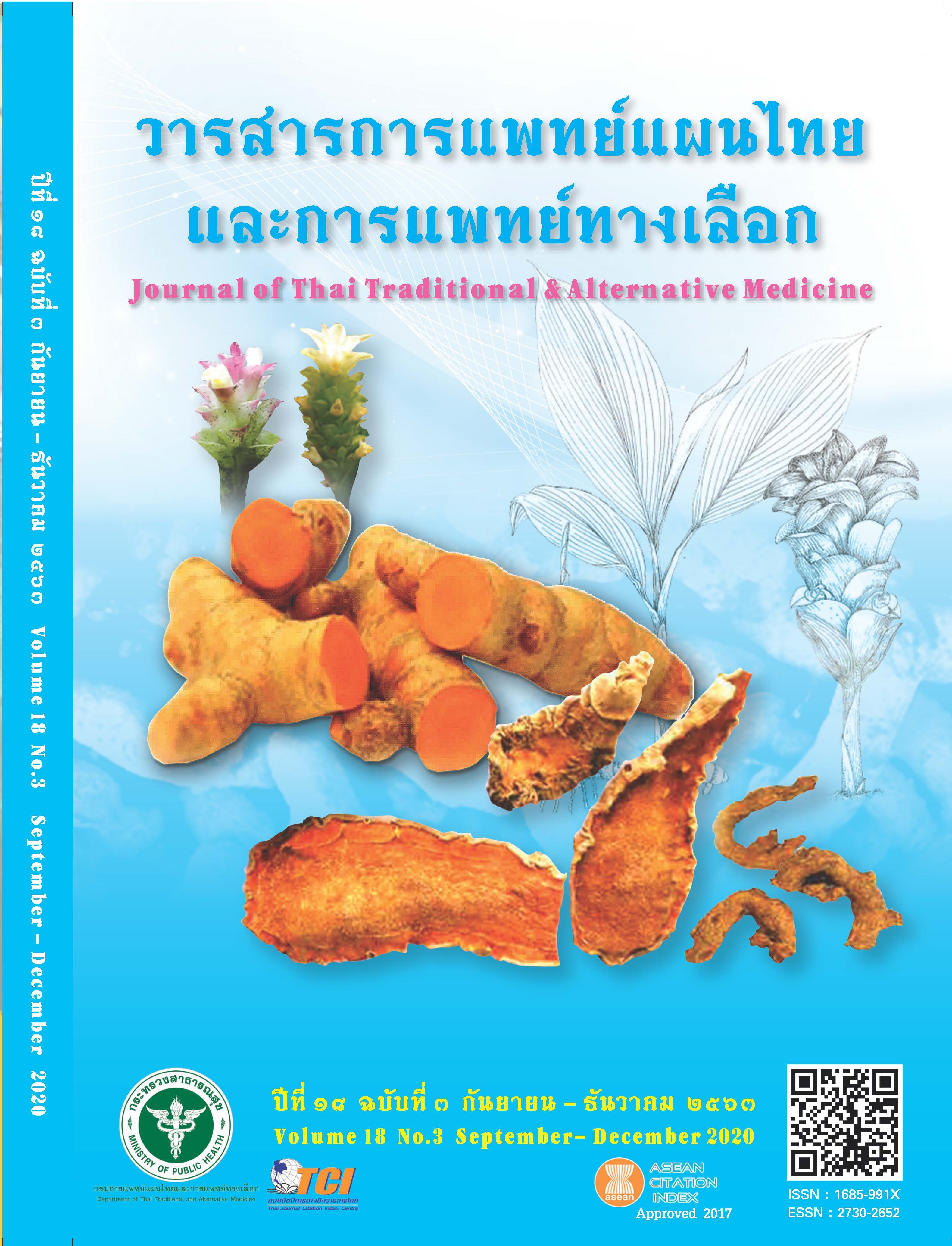Survey of the Utilization of Herbs in a Family Forest: Case Study of Mr. Chuangchan Usaprom’s Family Forest
Main Article Content
Abstract
The purpose of the research was to study the knowledge related to the use of herbs from Mr. Chuangchan Usaprom’s family forest in Phanna Nikhom District, Sakhon Nakhon province. Combined methods for data collection included a field survey and interviews with local key informants during January–February 2019. The herb information obtained was classified according to their utilization. The results have shown that the 5-acre family forest has 76 plant varieties classified into 40 families, 3 of which are most common, including Fabaceae (9 species), Rubiaceae (8 species) and Apocynacae (4 species). When classified by usage characteristics, 6 plant groups are: (1) medicinal, (2) native vegetables (3) woods for house construction, making appliances and using as fuel, (4) seasonal fruit trees, (5) ornamental flowers (6) other utilities; many species can be used for several purposes. For utilization, as many as 38 species are used as medicinal plants, mostly for postpartum care and body nourishment. Most of the plant varieties can be utilized in every season, except that fruit plants are seasonal in the rainy season and summer.
Article Details
References
Sakham P. Participatory forest management: recommendations from the context of knowledge for biodiversity development in Nong Han watershed forest, Sakhonakorn province. Research and Development Journal, Loei Rajabhat University. 2016;11(supplement):41-50. (in Thai)
Department of Development of Thai Traditional and Alternative Medicine. The 1st national mother plan
for Thai herbs development. 1st ed. Samut Prakan: TS Interprint; 2016. 200. (in Thai)
Hermhuk S, Sungpalee W, Atnaseo C, Pothawong N, Sri-Ngernyuang K. Plants utilization of Tai Lue at Bann
Tapapao community forest Mae Tha District, Lamphun Province. Journal of Forestry. 2018;37(1):111-20. (in Thai)
Faculty of Pharmacy Mahidol University. Siam Phaisayaphruek. 2nd ed. Bangkok: Department of Pharmacy
Faculty of Pharmacy Mahidol University; 1995. 272. (inThai)
Pha Sri Thavorn Temple. Herbs Wat Pha Sri Thavorn In honor of 50 years reign. 1st ed. Bangkok: Swicharn
Printing; 1996. 150. (in Thai)
Subchareon P. Herbs in northeast national park. 1st ed. Bangkok: Thai Daily Printing; 2001. 223. (in Thai)
Royal Institute. Plant taxonomy, A (Kor) letter, Royal Institute. 1st ed. Bangkok: Peun Pim; 1995. 495. (in Thai)
Pongpangan S, Pooprasert S. Edible and poisonous plants in the Thai forest. 2nd ed. Bangkok: OS Printing
House; 1991. 176. (in Thai)
Matchacheep S. Medicinal plants. 2nd ed. Bangkok: Rungsil Printing (1997); 1999. 317. (in Thai)
Samitinan T. Name of plants of Thailand. 2nd ed. Bangkok: Funny Publishing; 1980. 379. (in Thai)
Pao-in T, Pao-in N. Interesting medicine tree. 1. Bangkok: Offset Press; 2001. 374. (in Thai)
Veesommai U, Kavduengtain P. Wild trees in Thailand I. 1st ed. Bangkok: HN Group Printing; 2004. 652. (in Thai)
Chuakun W, Chairmanthurak S, Janejittikul T. Encyclopedia of herbs, book no.5, northeast folk herbs. 1st ed.
Bangkok: Amarin Book Center; 2003. 191. (in Thai)
Wutthamavej W. Join in preserving Thai heritage: Encyclopedia of Thai medicines 1. 1st ed. Bangkok: Phetch
Printing; 2000. 288. (in Thai)
Wutthamavej W. Join in preserving Thai heritage: encyclopedia of herbs including Thai pharmaceutical
principles. 1st ed. Bangkok: Odeon Store Publisher; 1997. 626. (in Thai)
Tongboonkuea Y. Diversity and utilization of medicinal plants Tham Phet - Tham Thong forest park Takhlee
District, Nakhon Sawan Province. 1st ed. Nakhon Sawan: Office of Conservation Area 12 (Nakhon Sawan), Department of National Parks, Wildlife and Plant Conservation; 2008. 86. (in Thai)


